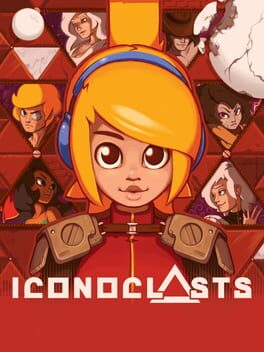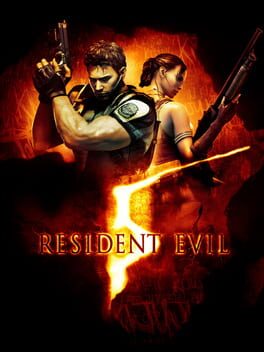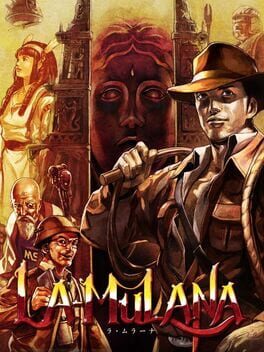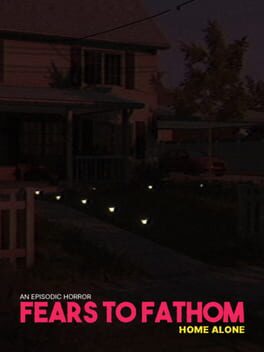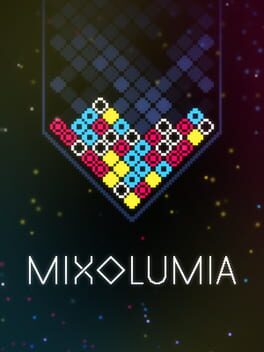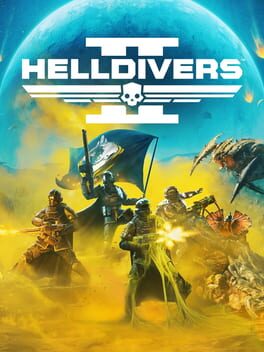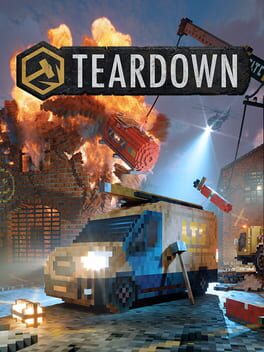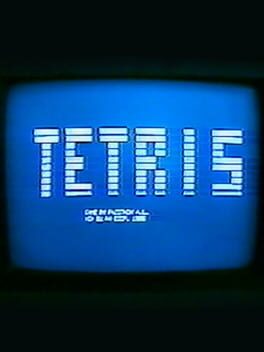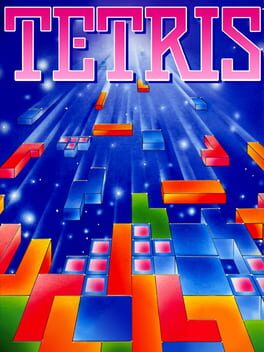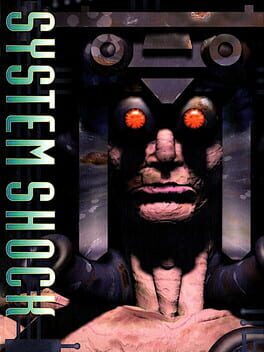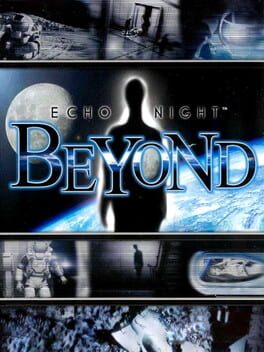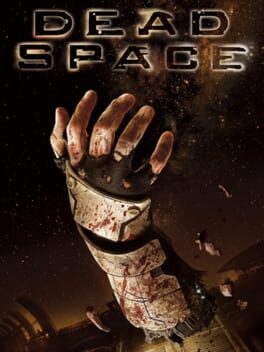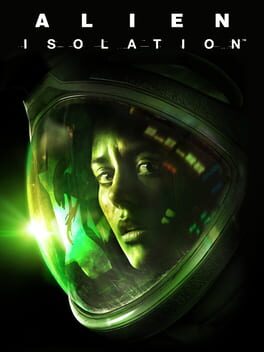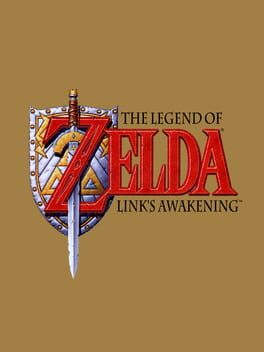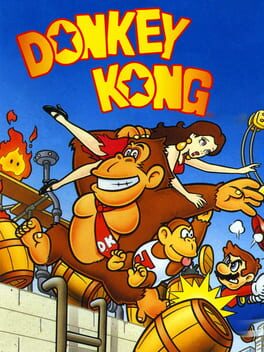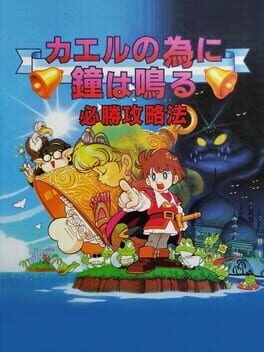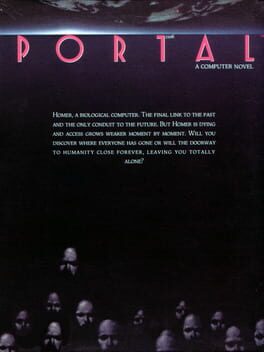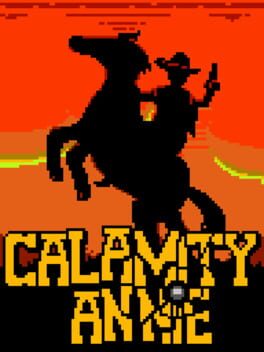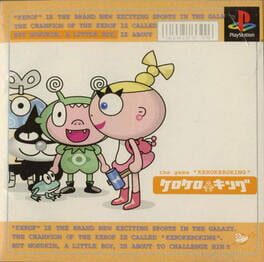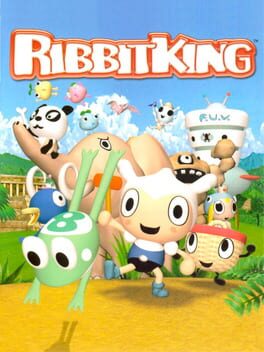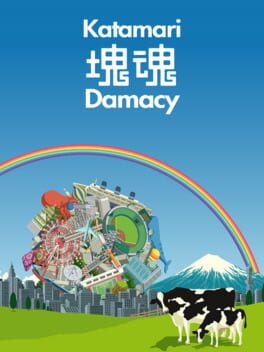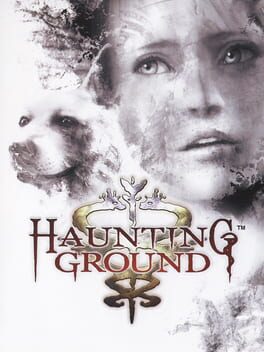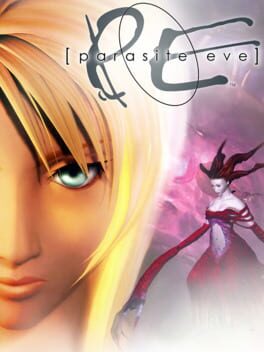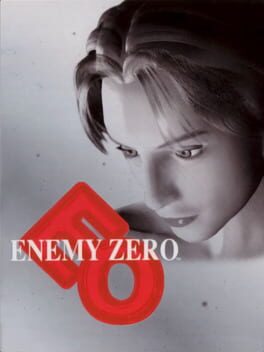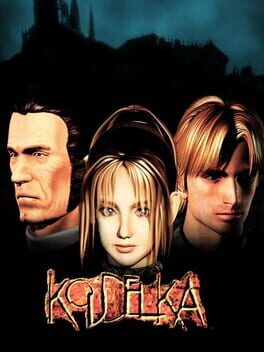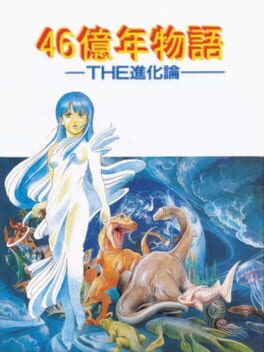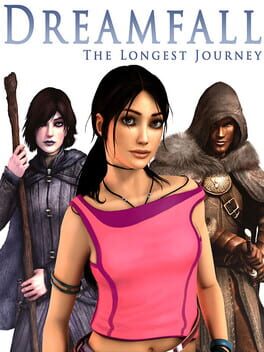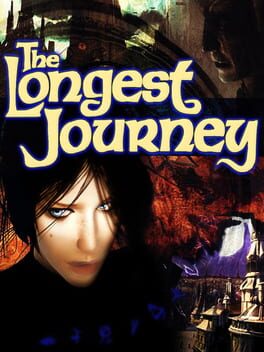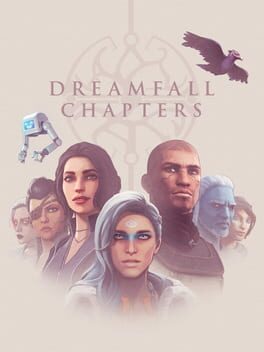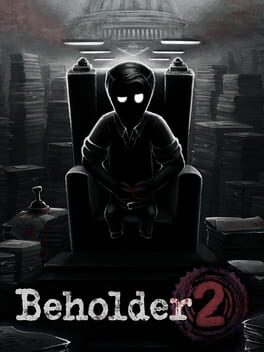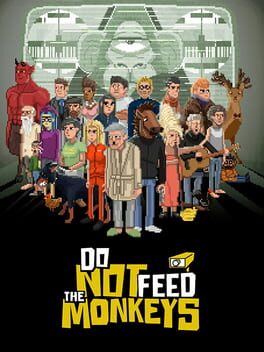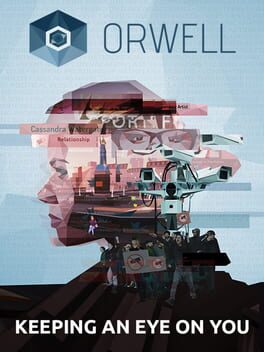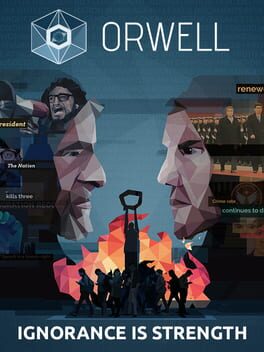atomicoperro
34 reviews liked by atomicoperro
Iconoclasts
2018
(First sentence refers to the last line of Dandara review.)
Iconoclasts goes the other way, not exploring platforms in space but using them to tell a story of subjectivities at war. Ideology as platform, personality as platform. Essentially, character as platform. This makes for a knotted, thorny game full of difficult people. In other words, a hardcore platformer. If platforms are people.
I used to have a very broad idea of the platformer. Especially as a storytelling device. There was something so natural about the story of a pit. All the ways one might fall in or climb out. The natural range of emotions that comes with moving across a landscape. How different people might face the same world. But somewhere along the way, as style and difficulty began to dominate, even thematized difficulty, I stopped thinking of their potential this way.
So I came out of Iconoclasts with something like gratitude. I thought I was getting another metroidvania with a cool look. But turns out it’s not actually a metroidvania. Its spatial logic serves its story more than your empowerment. And its pixel art is not there to impress you. Instead, the blocky unnaturalness raises unexpected metaphysical questions. It may be one of the only games that tries to reckon with pixel art, what and how it means, and what it signifies for worldbuilding.
Iconoclasts’ characters don’t know what to make of their strange, hard-edged world. And they’re not nice about it. They constantly pierce each other’s sacred solipsism, that worldview and faith we need in order to live. Everyone ends up being an iconoclast to each other. None more so than my favorite character, Mina. Her directness, her intensity and realness, her raw family trauma, even her smelliness, they both endeared her to me and left me shook. Because I’m full of fire too. And I don’t know what to make of the world either.
The game is not exactly encouraging about any of this. People die, their rightness or wrongness left hanging, and those left behind must reckon with the remains. There aren’t lessons to learn or much in the way of a player’s personal edification. Iconoclasts instead offers a rare realism about difference, about unresolved subjectivities. Or rather, subjectivity as something ultimately unresolvable. Your Robin is a mechanic who can fix almost anything. But not this.
And yet Iconoclasts ends with a kind of hope. As the known world is threatened and transformed, Robin’s hardass brother Elro finally relents as well. “Alright, Robin…I won’t try to tell you what to do anymore.” Our silent heroine hears him, pauses a moment, and then flops down in bed. Hard cut. But you feel this space open up, this possibility between people, if not to celebrate their iconoclasm, to at least let it lie. The game knows that small shifts between people matter as much as the defeat of a calamitous space worm. The credits then reveal an almost comically long list of named characters because that’s what the game cares about in the end. No system of belief can contain all these people. No explanation is total.
Iconoclasts goes the other way, not exploring platforms in space but using them to tell a story of subjectivities at war. Ideology as platform, personality as platform. Essentially, character as platform. This makes for a knotted, thorny game full of difficult people. In other words, a hardcore platformer. If platforms are people.
I used to have a very broad idea of the platformer. Especially as a storytelling device. There was something so natural about the story of a pit. All the ways one might fall in or climb out. The natural range of emotions that comes with moving across a landscape. How different people might face the same world. But somewhere along the way, as style and difficulty began to dominate, even thematized difficulty, I stopped thinking of their potential this way.
So I came out of Iconoclasts with something like gratitude. I thought I was getting another metroidvania with a cool look. But turns out it’s not actually a metroidvania. Its spatial logic serves its story more than your empowerment. And its pixel art is not there to impress you. Instead, the blocky unnaturalness raises unexpected metaphysical questions. It may be one of the only games that tries to reckon with pixel art, what and how it means, and what it signifies for worldbuilding.
Iconoclasts’ characters don’t know what to make of their strange, hard-edged world. And they’re not nice about it. They constantly pierce each other’s sacred solipsism, that worldview and faith we need in order to live. Everyone ends up being an iconoclast to each other. None more so than my favorite character, Mina. Her directness, her intensity and realness, her raw family trauma, even her smelliness, they both endeared her to me and left me shook. Because I’m full of fire too. And I don’t know what to make of the world either.
The game is not exactly encouraging about any of this. People die, their rightness or wrongness left hanging, and those left behind must reckon with the remains. There aren’t lessons to learn or much in the way of a player’s personal edification. Iconoclasts instead offers a rare realism about difference, about unresolved subjectivities. Or rather, subjectivity as something ultimately unresolvable. Your Robin is a mechanic who can fix almost anything. But not this.
And yet Iconoclasts ends with a kind of hope. As the known world is threatened and transformed, Robin’s hardass brother Elro finally relents as well. “Alright, Robin…I won’t try to tell you what to do anymore.” Our silent heroine hears him, pauses a moment, and then flops down in bed. Hard cut. But you feel this space open up, this possibility between people, if not to celebrate their iconoclasm, to at least let it lie. The game knows that small shifts between people matter as much as the defeat of a calamitous space worm. The credits then reveal an almost comically long list of named characters because that’s what the game cares about in the end. No system of belief can contain all these people. No explanation is total.
Automaton Lung
2022
One of those games that are somewhat familiar to the hands but refresh the eyes and mind
-One of the last games on a dead Nintendo platform is a collection of unfinished levels, featuring a gameworld that seems to somehow fit a dead Metroid. Well, not dead, an unborn Metroid Prime more like. A copy with no original. An untimely and unborn digital world, a simulation of the worst for those who want to create video games in an industry that demands results and for those who are looking for content and hours of play. throws some sensations that I had with those that already existed in the 80s (Zelda, Xanadu Revival) until the end of the last decade with Connor Sherlock, Kojima and Taro: a ghost zone where the content -if there is any- can kill your interpretive creativity from within, reach an icon, a collectible, a new area and that the reward is emptiness.
Where is the Lore?
Any. There is not.
Constant movement and no linear thinking. I think that is what we need, that they give us less and put more on our part. And now, I know that we give a good part of our energy to overcome challenges and, why not say so? A good deal of our money goes into this, but our meaning comes in many forms.
-I honestly don't know what the title refers to, but playing it in the month in which Splatoon 3 is launched, which finally seems to find something in its own saga -3 deliveries have taken a long time- beyond a more or less original concept and in the that the latest ranges of Graphic Cards are announced at exorbitant prices and... It's just a micro event, yes, let's go with Automated Lungs
-In something if it looks like the first metroid: The world is only transited, you do not get to dominate. The discomfort of moving through this unborn world of unfinished spaces has the consequence that picking up a simple collectible on a narrow catwalk can become a challenge that is highly dependent on our ability to maintain somewhat rigid inertia through the joystick. The character of this reminds me of Nagoshi's Super Monkey Ball (yes)
-I've never laughed so hard at those sections where they put a collectible in a place you can almost touch but it's hidden behind a transparent wall or whatever, in an area only accessible after a hell of a takeshis challenge. Not even VVVVV's. And at the same time a strange terror. And relief. If the void is like that, if the richness and texture of these dead zones is only a catalyst for sensations and the most literal content is scarce, I am relieved.
On the other hand, this void is not as resounding as the literalness that floods the interpretation and design of contemporary video games. I wouldn't blame anyone who saw the game as a product of "a little polished indie series dealing with self-contained challenges" to be honest.
-Negative areas. Dark green void. Towers that lead to cities driven more by a dreamlike sense than by a gamy logic. I go where I want as I can and that scares me, again it's very strange. I am invaded by the thought of how much contemporary pop culture and the era of immediacy have clearly guided us and have marked a path of more evident and linear readings.
I will definitely come back to this game when its PC version comes out
-One of the last games on a dead Nintendo platform is a collection of unfinished levels, featuring a gameworld that seems to somehow fit a dead Metroid. Well, not dead, an unborn Metroid Prime more like. A copy with no original. An untimely and unborn digital world, a simulation of the worst for those who want to create video games in an industry that demands results and for those who are looking for content and hours of play. throws some sensations that I had with those that already existed in the 80s (Zelda, Xanadu Revival) until the end of the last decade with Connor Sherlock, Kojima and Taro: a ghost zone where the content -if there is any- can kill your interpretive creativity from within, reach an icon, a collectible, a new area and that the reward is emptiness.
Where is the Lore?
Any. There is not.
Constant movement and no linear thinking. I think that is what we need, that they give us less and put more on our part. And now, I know that we give a good part of our energy to overcome challenges and, why not say so? A good deal of our money goes into this, but our meaning comes in many forms.
-I honestly don't know what the title refers to, but playing it in the month in which Splatoon 3 is launched, which finally seems to find something in its own saga -3 deliveries have taken a long time- beyond a more or less original concept and in the that the latest ranges of Graphic Cards are announced at exorbitant prices and... It's just a micro event, yes, let's go with Automated Lungs
-In something if it looks like the first metroid: The world is only transited, you do not get to dominate. The discomfort of moving through this unborn world of unfinished spaces has the consequence that picking up a simple collectible on a narrow catwalk can become a challenge that is highly dependent on our ability to maintain somewhat rigid inertia through the joystick. The character of this reminds me of Nagoshi's Super Monkey Ball (yes)
-I've never laughed so hard at those sections where they put a collectible in a place you can almost touch but it's hidden behind a transparent wall or whatever, in an area only accessible after a hell of a takeshis challenge. Not even VVVVV's. And at the same time a strange terror. And relief. If the void is like that, if the richness and texture of these dead zones is only a catalyst for sensations and the most literal content is scarce, I am relieved.
On the other hand, this void is not as resounding as the literalness that floods the interpretation and design of contemporary video games. I wouldn't blame anyone who saw the game as a product of "a little polished indie series dealing with self-contained challenges" to be honest.
-Negative areas. Dark green void. Towers that lead to cities driven more by a dreamlike sense than by a gamy logic. I go where I want as I can and that scares me, again it's very strange. I am invaded by the thought of how much contemporary pop culture and the era of immediacy have clearly guided us and have marked a path of more evident and linear readings.
I will definitely come back to this game when its PC version comes out
Hades
2018
Easily in the top 5 most overrated games of all time. The only reason Hades doesn't deserve the lowest rating is the impeccable presentation from Supergiant Games. As with the developer's other work, it's easy to get sucked into Hades because of how good it looks and sounds. This time, the studio marries its distinguished production style with a business plan based on appealing to the lowest common denominator.
Hades' familiar, repetitive action has gotten a pass from critics and fans thanks to the game's shrewd psychological manipulation. The fast leveling provides a reliable dopamine rush, and the upgrade preview icons flatter and tempt players by letting them know the progress that lies just a room away. The actual combat and upgrading are unoriginal and unchallenging. Using the logic I learned from the Diablo series and its many followers, I developed tactics (after a mere handful of failed runs) that allowed me to dominate most rooms and defeat Hades on my first attempt. The game evokes hell while being formulaic and welcoming, offering an onion that you can always peel. The perfect recipe for ego-stroked addiction.
And the story doesn't live up to the hype. It's all cliched juvenilia about flipping the bird to daddy and running to mommy for wise words and protection and having funny conversations with friends after you get a boo boo. Hades exploits the infantilized gaming market like a shameless pimp. Game of the Year? More like Trick of the Year.
Hades' familiar, repetitive action has gotten a pass from critics and fans thanks to the game's shrewd psychological manipulation. The fast leveling provides a reliable dopamine rush, and the upgrade preview icons flatter and tempt players by letting them know the progress that lies just a room away. The actual combat and upgrading are unoriginal and unchallenging. Using the logic I learned from the Diablo series and its many followers, I developed tactics (after a mere handful of failed runs) that allowed me to dominate most rooms and defeat Hades on my first attempt. The game evokes hell while being formulaic and welcoming, offering an onion that you can always peel. The perfect recipe for ego-stroked addiction.
And the story doesn't live up to the hype. It's all cliched juvenilia about flipping the bird to daddy and running to mommy for wise words and protection and having funny conversations with friends after you get a boo boo. Hades exploits the infantilized gaming market like a shameless pimp. Game of the Year? More like Trick of the Year.
Resident Evil 5
2009
Prueba de lo poco que entendemos los videojuegos en realidad, y de que a veces lo que los hace buenos o malos está en los hilos invisibles que sostienen aquello que apreciamos a primera vista.
Resident Evil 5 empeora considerablemente lo conseguido por su antecesor pese a mejorar el sistema de combate, que es la base de la propuesta. Ahora podemos finiquitar enemigos derribados de un pisotón en lugar de esperar a que se levanten, lo que agiliza el ritmo de los encuentros, y el nuevo modo cooperativo propicia dinámicas de compenetración que enriquecen la jugabilidad. El inventario, antes un pequeño minijuego de optimización de espacio, ahora es un plus para la acción: reduciendo el espacio para ítems nos obliga a sacrificar armamento y evita que vayamos sobrados de munición, y su nuevo uso a tiempo real fuerza instantes de tensión cada vez que queremos usar granadas o hierbas curativas o lo que sea. Además, al estar compuesto de unos pocos huecos separados a los que hay asignado un botón, dónde se pone cada cosa importa. Sin necesidad de malgastar minutos colocando y ordenando, librándose de las pausas in-game y reservando todo el tiempo posible para la acción. Debería haber sido el mejor Resident Evil, pero no fue así.
Resident Evil 5 es el primer videojuego de la franquicia ya cien por cien juego de acción. El título está fundamentalmente conformado por set pieces, reduciendo la importancia de la navegación, y con esto se pierde la parte de recorrer un mundo y sentir que uno avanza y descubre y a ver a dónde demonios voy ahora. Además, es todo tan rocambolesco y estúpido y, sobre todo, se siente tan inconexo, que uno nunca termina de estar ahí. No es solo cuestión de atmósfera, sino de continuidad e inmersión. Y lo peor de todo es el diseño. Lo que hacía funcionar tan bien la acción de Resident Evil 4 era su manera de rodearnos de enemigos. Básicamente, el juego se resumía en llegar a un lugar y ser emboscado para acto seguido tener uno que sacarse las castañas del fuego como buenamente pudiera. Control de masas. Y la clave de un buen control de masas está en el posicionamiento respecto al enemigo, cosa que aquel título sabía exprimir con sus escenarios, más cerrados y limitantes. Siempre sentíamos el agua al cuello, incluso cuando no era del todo así, y cada cambio de arma o granada empleada se sentía crucial. Pero en Resident Evil 5 esto apenas sucede. Siempre hay demasiado espacio, siempre es fácil acabar con los esbirros o huir o encontrar coberturas. Y, si no, tu compañero ya te echa un cable. Su énfasis en el espectáculo es agotador y su acción, pese a la aparente mejora, sabe a menos. Es un videojuego decente, pero decepcionante y en cierta medida insustancial.
Resident Evil 5 empeora considerablemente lo conseguido por su antecesor pese a mejorar el sistema de combate, que es la base de la propuesta. Ahora podemos finiquitar enemigos derribados de un pisotón en lugar de esperar a que se levanten, lo que agiliza el ritmo de los encuentros, y el nuevo modo cooperativo propicia dinámicas de compenetración que enriquecen la jugabilidad. El inventario, antes un pequeño minijuego de optimización de espacio, ahora es un plus para la acción: reduciendo el espacio para ítems nos obliga a sacrificar armamento y evita que vayamos sobrados de munición, y su nuevo uso a tiempo real fuerza instantes de tensión cada vez que queremos usar granadas o hierbas curativas o lo que sea. Además, al estar compuesto de unos pocos huecos separados a los que hay asignado un botón, dónde se pone cada cosa importa. Sin necesidad de malgastar minutos colocando y ordenando, librándose de las pausas in-game y reservando todo el tiempo posible para la acción. Debería haber sido el mejor Resident Evil, pero no fue así.
Resident Evil 5 es el primer videojuego de la franquicia ya cien por cien juego de acción. El título está fundamentalmente conformado por set pieces, reduciendo la importancia de la navegación, y con esto se pierde la parte de recorrer un mundo y sentir que uno avanza y descubre y a ver a dónde demonios voy ahora. Además, es todo tan rocambolesco y estúpido y, sobre todo, se siente tan inconexo, que uno nunca termina de estar ahí. No es solo cuestión de atmósfera, sino de continuidad e inmersión. Y lo peor de todo es el diseño. Lo que hacía funcionar tan bien la acción de Resident Evil 4 era su manera de rodearnos de enemigos. Básicamente, el juego se resumía en llegar a un lugar y ser emboscado para acto seguido tener uno que sacarse las castañas del fuego como buenamente pudiera. Control de masas. Y la clave de un buen control de masas está en el posicionamiento respecto al enemigo, cosa que aquel título sabía exprimir con sus escenarios, más cerrados y limitantes. Siempre sentíamos el agua al cuello, incluso cuando no era del todo así, y cada cambio de arma o granada empleada se sentía crucial. Pero en Resident Evil 5 esto apenas sucede. Siempre hay demasiado espacio, siempre es fácil acabar con los esbirros o huir o encontrar coberturas. Y, si no, tu compañero ya te echa un cable. Su énfasis en el espectáculo es agotador y su acción, pese a la aparente mejora, sabe a menos. Es un videojuego decente, pero decepcionante y en cierta medida insustancial.
Resident Evil 4
2011
La-Mulana
2012
La-Mulana is not the kind of game willing to simply give you it's secrets. La-Mulana is not the kind of game that expects you to earn it's secrets, either. In truth, La-Mulana doesn't really care what you give it to get it's secrets, because for La-Mulana, it will never be enough.
La-Mulana doesn't want you to have it's secrets. La-Mulana doesn't think you DESERVE it's secrets. If you want La-Mulana's secrets, you're going to have to pry them from it's cold, dead hands.
That's right. You're going to have to kill La-Mulana.
La-Mulana doesn't want you to have it's secrets. La-Mulana doesn't think you DESERVE it's secrets. If you want La-Mulana's secrets, you're going to have to pry them from it's cold, dead hands.
That's right. You're going to have to kill La-Mulana.
Mixolumia
2020
No logra el famoso "efecto Tetris" pero, a diferencia de tantas réplicas y variaciones que recibió aquel "juego perfecto", Mixolumia sí logra ese placer de pensar espacialmente de una forma única en un juego de puzzles en tiempo real que tenía (y sigue teniendo) Tetris.
Los errores ahora no tienen una opción de corrección inmediatamente reconocible. Esas correcciones son fruto de acciones en cadena (otro puntazo de Mixolumia) que en un principio parecen fruto del azar pero de que muy de a poco vamos controlando.
Y es ahí cuando el juego brilla. Ahora el interés del setup no es "dejar 4 espacios libres a la derecha", es acumular errores para lograr combos, la mejor forma de lograr altas puntuaciones, ya que Mixolumia termina antes de que perdamos y ese sistema se vuelve necesario si tenemos interés en subir en el ranking (OTRO punto por encima de Tetris, donde mejorábamos, básicamente, afilando nuestros reflejos).
Los errores ahora no tienen una opción de corrección inmediatamente reconocible. Esas correcciones son fruto de acciones en cadena (otro puntazo de Mixolumia) que en un principio parecen fruto del azar pero de que muy de a poco vamos controlando.
Y es ahí cuando el juego brilla. Ahora el interés del setup no es "dejar 4 espacios libres a la derecha", es acumular errores para lograr combos, la mejor forma de lograr altas puntuaciones, ya que Mixolumia termina antes de que perdamos y ese sistema se vuelve necesario si tenemos interés en subir en el ranking (OTRO punto por encima de Tetris, donde mejorábamos, básicamente, afilando nuestros reflejos).
TowerFall Ascension
2014
Conocimos Towerfall con unos amigos allá por finales de 2014, por un top de DayoScript de mejores juegos del año. Hasta ese entonces, las juntadas suponían alguna que otra partida de Worms Armageddon si había suficientes ganas. El que no quería no jugaba y tampoco suponía un compromiso a la hora de sentarse, al ser por turnos y poder pausar. Un juego de fondo, vamos.
Towerfall nos puso a los cuatro delante de la pantalla al mismo tiempo y requirió de nuestra plena atención. Al poco tiempo, no hacíamos otra cosa que jugar al juntarnos. A veces, era la misma razón para juntarse. Rotando equipos, cambiando variables, intentando descubrir algún que otro secreto. Faltábamos a clase, con la excusa de quedarnos estudiando pero sabiendo que la razón era otra. Cuando la culpa era alta, igualmente nos proponíamos 3-4 partidas después de una hora de estudio.
Simple a primera vista, Towerfall engancha por los ojos y por las manos. Por esa inercia y gusto por la fisicidad táctil. Y por lo intuitivamente que se descubran muchas de sus mecánicas que más profundidad añaden. Ir hasta el borde izquierdo de la pantalla y seguir (si hay un camino) hace que salgamos por la derecha, sí. Pero, quién no se comió un flechazo por no ver del otro lado al hacerlo? Quién no confió demás en el ángulo de giro de una flecha? Quién no se suicidó con una fecha que rebota, olvidando su efecto? Estas variables de simple efecto, unidas, hacen que uno vaya de a poco entrenando el músculo de leer e interpretar información de la pantalla, que siempre está disponible y clara, aspecto clave para la competitividad. Flechas más rápidas, que atraviesan paredes, que doblan al estar cerca de un muñeco, que dejan una zona infectada. Plataformas que se activan al estar arriba o abajo o cada x tiempo. Escudos que nos dan una chance más al recibir un flechazo pero no permiten agarrar flechas con el "dash". Cada mecanismo es simple de por sí, tanto en su funcionamiento como en su comunicación, pero se unen de forma consciente para saturar de a poco al jugador y obligarlo a poner un poco más de cabeza.
En nuestros momentos de mayor obsesión, queríamos tenerlo en todos lados. Desde alguna notebook que alguno de los cuatro tengamos disponible, a intentar jugarlo online vía Parsec o similares. Nunca funcionó del todo. No llegó a sentirse un cuarto de lo que era jugarlo de forma presencial. Una frustración que nos acompañaba, que nos tenía periódicamente chequeando por alguna actualización con un modo online, pero que también nos reunía presencialmente.
La razón porque no funcionó es evidente: Towerfall es un juego de ambiente. A veces recordando otras épocas del videojuego, Towerfall entiende que épica y diversión van de la mano, y combina sus elementos estéticos, de un alto calibre, para lograr ambas sensaciones. El diseño de los personajes, el mapa, los niveles, la campaña. A todo esto es imposible poner el dedo sobre si está queriendo dar una sensación de diversión o heroicidad. Y la cumbre de todos estos elementos: la música. Quizá la mejor banda sonora de la historia del videojuego, en cuanto a potenciar sensaciones continuamente. A sentir la victoria y la gloria, o la derrota y las ganas de revancha, todo esto conservando la simplicidad que caracteriza el juego (un ejemplo: https://www.youtube.com/watch?v=WKmPFRx1_0Q) sin perder calidad por el camino.
Como todo en esta vida, con el tiempo fue sufriendo un desgaste. Entre las infinitas horas echadas y que Rocket League irrumpiría a finales de 2015, llenando ese hueco online que necesitábamos, Towerfall fue quedando de lado. Cada vez que lo intentábamos de vuelta, mucho tiempo después, por razones que desconozco, no hacía click con nosotros. No sé si el óxido, o las faltas de ganas de cualquiera de nosotros cuatro (algo infinitamente contagioso a la hora de jugar en grupo) o su expansión, que nos llevó a intentar hacer otras campañas de menor nivel, o yo qué sé, pero, hasta hace un par de meses, nunca volvió a hacer eso.
Uno del grupo de cuatro (inamovibles, por cierto) tomó la decisión de continuar su vida en Europa. La razón de juntarnos estaba lejos de esto, pero a base de recordar y querer rememorar, terminamos jugando unas últimas partidas. Todos con un nivel inferior al que supimos tener, pero lo suficientemente parecido entre nosotros como para que las partidas sean reñidas (y recuperando gran parte de ese nivel después de unos minutos de juego). Y todos disfrutando plenamente de lo que ninguno quería reconocer como una última vez.
Towerfall nos puso a los cuatro delante de la pantalla al mismo tiempo y requirió de nuestra plena atención. Al poco tiempo, no hacíamos otra cosa que jugar al juntarnos. A veces, era la misma razón para juntarse. Rotando equipos, cambiando variables, intentando descubrir algún que otro secreto. Faltábamos a clase, con la excusa de quedarnos estudiando pero sabiendo que la razón era otra. Cuando la culpa era alta, igualmente nos proponíamos 3-4 partidas después de una hora de estudio.
Simple a primera vista, Towerfall engancha por los ojos y por las manos. Por esa inercia y gusto por la fisicidad táctil. Y por lo intuitivamente que se descubran muchas de sus mecánicas que más profundidad añaden. Ir hasta el borde izquierdo de la pantalla y seguir (si hay un camino) hace que salgamos por la derecha, sí. Pero, quién no se comió un flechazo por no ver del otro lado al hacerlo? Quién no confió demás en el ángulo de giro de una flecha? Quién no se suicidó con una fecha que rebota, olvidando su efecto? Estas variables de simple efecto, unidas, hacen que uno vaya de a poco entrenando el músculo de leer e interpretar información de la pantalla, que siempre está disponible y clara, aspecto clave para la competitividad. Flechas más rápidas, que atraviesan paredes, que doblan al estar cerca de un muñeco, que dejan una zona infectada. Plataformas que se activan al estar arriba o abajo o cada x tiempo. Escudos que nos dan una chance más al recibir un flechazo pero no permiten agarrar flechas con el "dash". Cada mecanismo es simple de por sí, tanto en su funcionamiento como en su comunicación, pero se unen de forma consciente para saturar de a poco al jugador y obligarlo a poner un poco más de cabeza.
En nuestros momentos de mayor obsesión, queríamos tenerlo en todos lados. Desde alguna notebook que alguno de los cuatro tengamos disponible, a intentar jugarlo online vía Parsec o similares. Nunca funcionó del todo. No llegó a sentirse un cuarto de lo que era jugarlo de forma presencial. Una frustración que nos acompañaba, que nos tenía periódicamente chequeando por alguna actualización con un modo online, pero que también nos reunía presencialmente.
La razón porque no funcionó es evidente: Towerfall es un juego de ambiente. A veces recordando otras épocas del videojuego, Towerfall entiende que épica y diversión van de la mano, y combina sus elementos estéticos, de un alto calibre, para lograr ambas sensaciones. El diseño de los personajes, el mapa, los niveles, la campaña. A todo esto es imposible poner el dedo sobre si está queriendo dar una sensación de diversión o heroicidad. Y la cumbre de todos estos elementos: la música. Quizá la mejor banda sonora de la historia del videojuego, en cuanto a potenciar sensaciones continuamente. A sentir la victoria y la gloria, o la derrota y las ganas de revancha, todo esto conservando la simplicidad que caracteriza el juego (un ejemplo: https://www.youtube.com/watch?v=WKmPFRx1_0Q) sin perder calidad por el camino.
Como todo en esta vida, con el tiempo fue sufriendo un desgaste. Entre las infinitas horas echadas y que Rocket League irrumpiría a finales de 2015, llenando ese hueco online que necesitábamos, Towerfall fue quedando de lado. Cada vez que lo intentábamos de vuelta, mucho tiempo después, por razones que desconozco, no hacía click con nosotros. No sé si el óxido, o las faltas de ganas de cualquiera de nosotros cuatro (algo infinitamente contagioso a la hora de jugar en grupo) o su expansión, que nos llevó a intentar hacer otras campañas de menor nivel, o yo qué sé, pero, hasta hace un par de meses, nunca volvió a hacer eso.
Uno del grupo de cuatro (inamovibles, por cierto) tomó la decisión de continuar su vida en Europa. La razón de juntarnos estaba lejos de esto, pero a base de recordar y querer rememorar, terminamos jugando unas últimas partidas. Todos con un nivel inferior al que supimos tener, pero lo suficientemente parecido entre nosotros como para que las partidas sean reñidas (y recuperando gran parte de ese nivel después de unos minutos de juego). Y todos disfrutando plenamente de lo que ninguno quería reconocer como una última vez.
Super Hexagon
2012
While I can't help but admire Terry Cavanagh's commitment to his concept, Super Hexagon is more compelling to watch than to play. The visuals have a unique hypnotic beauty, and you can even close your eyes and get lost in Chipzel's urgent, ever-evolving soundtrack. But as an arcade-style challenge, Super Hexagon doesn't keep me coming back for more. Its simplicity is its greatest strength and weakness. The paradox follows: Super Hexagon would be less remarkable if it were more complex, yet I find myself wanting more of a reason to stay engaged as a player outside of getting used to the game's patterns to arrive at a sense of accomplishment. Being a mere spectator allows me to focus on Cavanagh's artistic conviction as well as relish the interplay between Chipzel's music, the pulsing shapes, and the constant string of narrowly avoided collisions; playing Super Hexagon leads me to question its long-term experiential appeal.
23 lists liked by atomicoperro
by Beet |
12 Games
by UnikOffical |
802 Games
by vehemently |
39 Games
by oldinamerica |
101 Games
by ludzu |
13 Games
by Detchibe |
110 Games
by Spacelung |
69 Games
by Ardwyw_mp3 |
4 Games
by soltis |
21 Games
